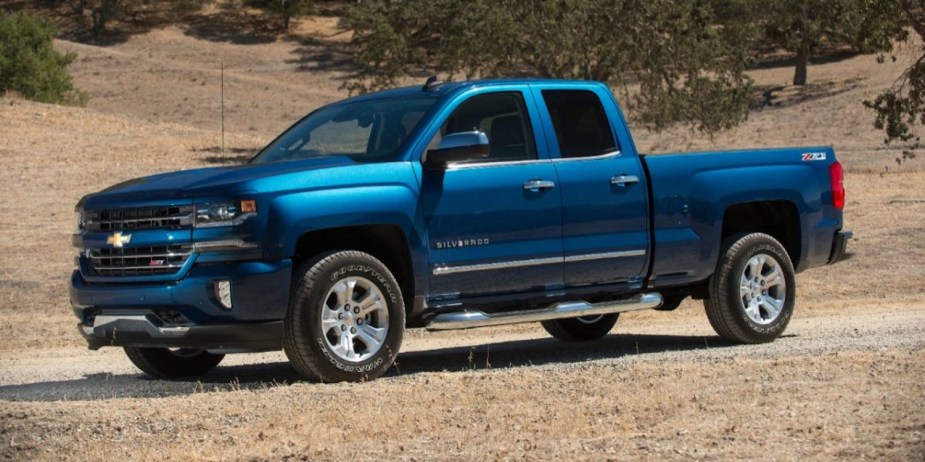
Chevy Dropped Silverado 5.3-L V8: The Problems Owners Report
Chevy’s 5.3-liter V8 was dropped in 2022 from the Silverado engine lineup. It has direct ties to its infamous small block engine that first appeared in 1955. Over the years it has seen continual improves and refreshes until it is unrecognizable from that long-ago time. But it has served GM well. Still, the 2021 and older 5.3-Liter V8 has seen issues. These may have partially been the reason for the demise of this engine.
Silverado 5.3-L fuel pressure regulator failures

This is the most common 5.3-liter issue that pops up. If the fuel regulator is failing, you’ll be lucky to even start the engine. If it does start at all, it will have a hard time running normally.
The problem will manifest itself by rough idling, stuttering, lagging acceleration, and spark plug fouling. Mostly, this starts happening after two or more years of use. The good news is that replacing the fuel pressure regulator is easy and cheap, should you decide to replace it yourself. There are numerous videos and instructions online for doing this. Or, you can take it into a service facility to handle it.
Silverado 5.3-L gasket and intake manifolds

With the advent of plastic intake manifolds, this common part has gone from never being an issue to something that needs attention on a regular basis. This is because engine heat takes its toll on plastic. Cracks will appear, which means it is time to replace it.
This goes along with gasket deterioration. Common in engines with higher mileage, it is also the inevitable result of hot and cold cycles and gasket material deteriorating. Gaskets vulnerable include exhaust gaskets, valve cover gaskets, oil pan gaskets, and even intake manifold gaskets.
Should any of these problems come about, you’ll notice power loss, stuttering, and/or a rough idle. A mechanic will check for leaks and cracks in the intake manifold and gasket surfaces. Replacing the affected parts will vastly improve engine life and drivability.
Silverado coolant loss

While rather uncommon in the past, with the outsourcing of 5.3-liter cylinder heads to a company called Castech, this is another problem that can occur over time. Unfortunately, according to sources including Chevyguide, the heads are not as finely inspected as previous factory-made heads.
The other unfortunate thing is that a cracked cylinder head can be a bugger to find. If you see coolant leaks or weeping around the heads, have your mechanic check it out. Or, if you’re interested in purchasing a used vehicle with this engine, have a pre-purchase technician remove the valve covers to get a better look at those heads. Over time, this will greatly reduce engine performance and, should oil get into cooling passages, can cause engine failure.
5.3-L faulty sensors

This is becoming a more common problem. Excessive heat, using low-quality oil, or excessive oil consumption, any of these can kill a sensor. To ward off a failed sensor, use quality oil and make sure the replacement sensor is a high-quality component.
Active fuel management issues

The Chevy AFM is meant to increase an engine’s power and performance. But it can result in PCV valve clogging, and excess oil accumulating inside of the valve covers. When this happens, the PCV valve can’t keep up, resulting in clogging. Then, it can’t introduce enough oxygen to aid the oil pump’s AFM valve.
Since the engine has to burn off more oil, carbon can build up on piston rings and cylinder walls. This reduces the air/fuel mixture which creates problems like misfiring, sluggishness, stumbling, and sludge buildup.
With proper care and maintenance, the 5.3-liter V8 should last well over 200,000 miles. Some of these issues are relatively minor but can manifest into major problems. Change your oil regularly, use good quality oil, and inspect or have your engine inspected periodically to ensure that any of the problems outlined above are caught early.



